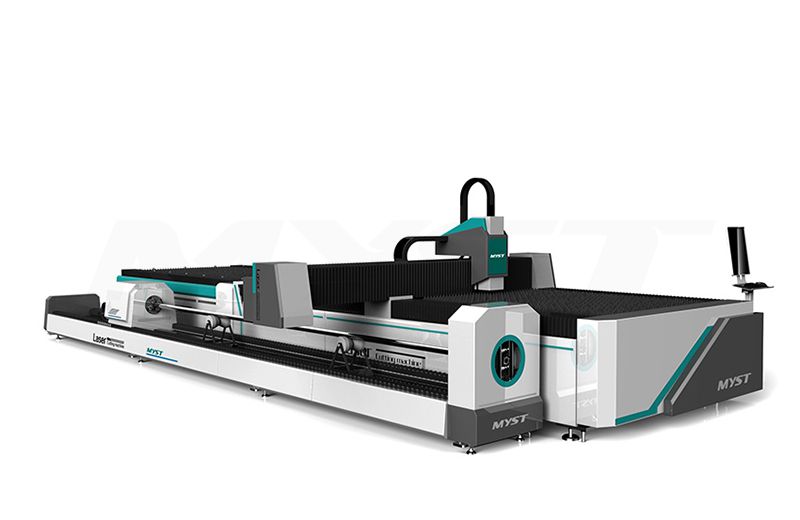+86 132 5674 2787
Máquina de corte por láser de metal, Máquina de corte por láser de fibra, Proveedor de máquinas de corte por láser, Máquina de marcado láser, Máquina de marcado láser de fibra...

+86 132 5674 2787
Máquina de corte por láser de metal, Máquina de corte por láser de fibra, Proveedor de máquinas de corte por láser, Máquina de marcado láser, Máquina de marcado láser de fibra...

Noticias de tecnología
Casa >> Blog >> Noticias de tecnología
Judging the quality of the laser cutting machine is the best way to judge the performance of the laser cutting equipment. The professional laser cutting machine supplier lists some of the nine criteria for judgment.
1. Roughness. Professional laser cutting machine will form vertical lines. The depth of the lines determines the roughness of the cutting surface. The shallower the lines, the smoother the cutting section. Roughness affects not only the appearance of the edges, but also the friction characteristics. In most cases, it is necessary to reduce the roughness as much as possible, so the shallower the texture, the higher the cutting quality.
2. Verticality. If the thickness of the sheet metal exceeds 10mm, the verticality of the cutting edge is very important. As you move away from the focus, the laser beam becomes divergent, and depending on the position of the focus, the cut becomes wider toward the top or bottom. The cutting edge is a few millimeters from the vertical line. The more vertical the edge, the higher the cutting quality.

Professional Laser Cutting Machine
3. Cutting width. Generally speaking, the cut width does not affect the cutting quality. Only when a particularly precise contour is formed inside the part, the cutting width has an important effect. This is because the cutting width determines the minimum inner warp of the contour. When the thickness of the sheet increases, the cutting width also changes. Increase. Therefore, we want to ensure the same high accuracy, regardless of the width of the cut, the workpiece should be constant in the processing area of the laser cutting machine.
4. Lines. When cutting thick plates at high speeds, molten metal does not appear in the cuts under the vertical laser beam, but instead sprays out at the rear of the laser beam. As a result, curved lines are formed at the cutting edge, and the lines closely follow the moving laser beam. To correct this problem, reducing the feed rate at the end of the cutting process can greatly eliminate the formation of lines.
5. glitch. The formation of burrs is a very important influencing factor in determining the quality of laser cutting. Because the removal of burrs requires additional work, the severity of the burrs and the amount of burrs can intuitively judge the quality of the cut.
6. Material deposition. The laser cutting machine encounters a special oily liquid on the surface of the workpiece before it begins to melt the perforations. During the cutting process, because the gasification and various materials are not used, the customer uses wind to remove the cut, but the upward or downward discharge will also form a deposit on the surface.
7. Sagging and corrosion. Sinking and corrosion have an adverse effect on the surface of the cutting edge and affect the appearance. They appear in cutting errors that should normally be avoided.
8. Heat-affected area. In laser cutting, the area near the cut is heated. At the same time, the structure of the metal changes. For example, some metals will harden. The heat affected area refers to the depth of the area where the internal structure changes.
9. Deformation. If the cutting heats the part sharply, it will deform. This is particularly important in fine machining, where the contours and webs are usually only a few tenths of a millimeter wide. Controlling laser power and using short laser pulses can reduce component heating and avoid distortion. Our company provides precision laser cutting machines. If you have any needs for our products, please feel free to contact us.
Ninguno
Análisis de los factores que afectan la calidad del corte por láser y cómo controlarlo
En comparación con el método de corte tradicional, el corte por láser tiene ...
Campos de aplicación de la máquina de corte por láser de fibra
Las máquinas de corte por láser de fibra se están volviendo populares gradua...
Cómo mantener una máquina de corte por láser de fibra
Los dueños de los talleres de fabricación de metales tienen muchas cosas a ma...
+86 132 5674 2787
Dirección: Habitación 2309, Edificio 3, Bloque Lvdi Ruili, Distrito de Shizhong, Ciudad de Jinan, Provincia de Shandong, China.

